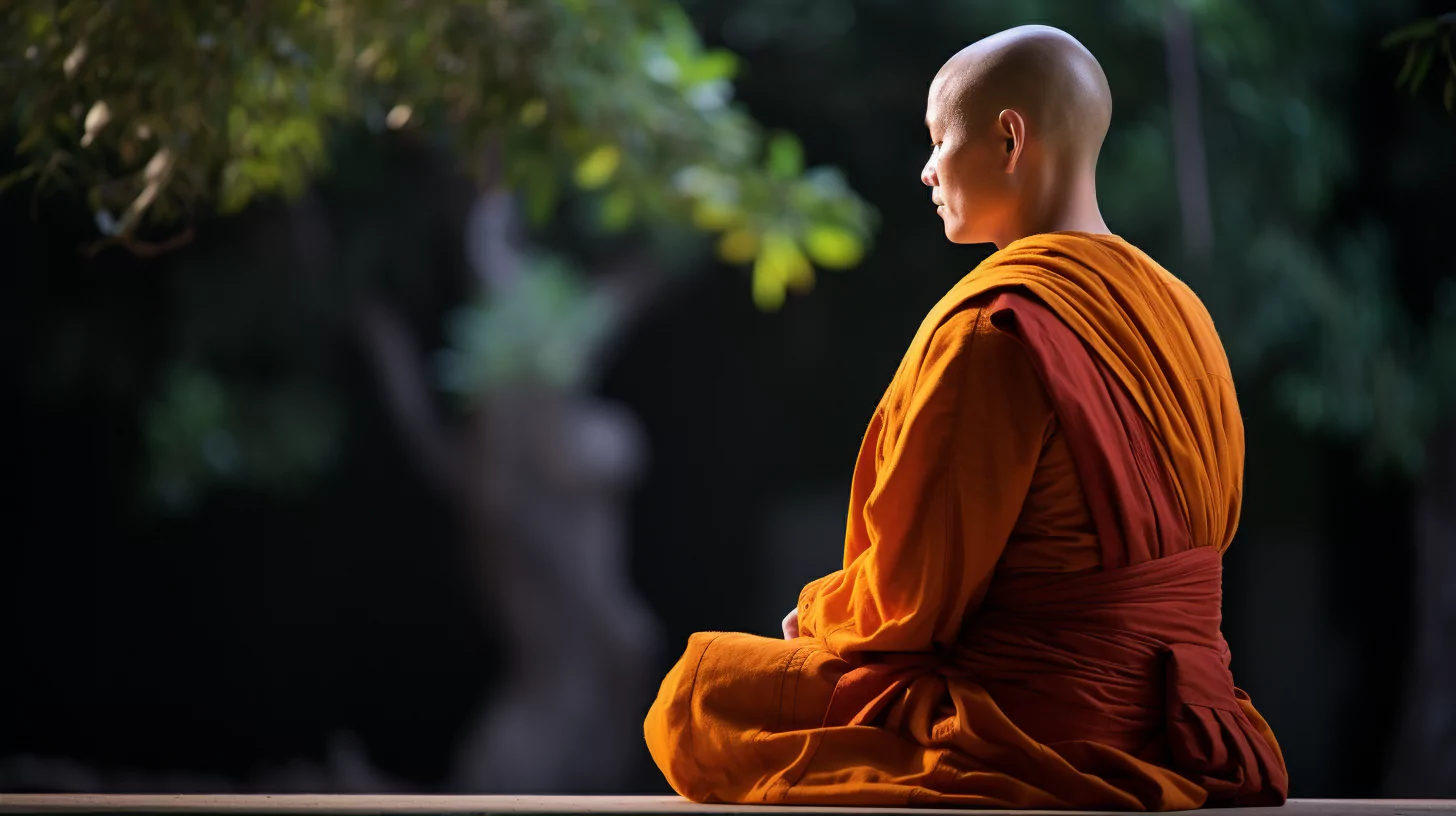Buddhism isn’t a single set of beliefs; rather, it’s split into two major branches. But what are the main distinctions between Theravada vs. Mahayana Buddhism?
Each of these two branches has a unique identity, offering practitioners two ways of attaining enlightenment. And you might be surprised by what you can learn about how to practice Buddhism from both instead of opposing them.
What is Theravada Buddhism?
Theravada means “The School of the Elders”. It’s one of the three main branches of Buddhism (the other two being Mahayana and Vajrayana).
The beliefs of Theravada Buddhism boil down to individual attainment of Enlightenment using Buddhist meditations—Samatha and Vipassana. Those who follow Theravada Buddhism aim to become an arhat, which in Sanskrit means “one who has gained insight into the true nature of existence”.
The origins of Theravada Buddhism
After the death of Buddha, the community broke into several groups, one of which was Theravada. The followers claim to adhere to the original practices of Buddha. Hence the name Theravada, a.k.a. “The School of the Elders”.
Where can you find this type of Buddhism mainly practiced?
Sri Lanka, Thailand, Laos, Cambodia, and Myanmar.
Theravada sutras
Theravada Buddhists turn to the Pali Canon, a 55-volume collection of Buddhist texts written in the preserved language known as Pali. The Pali Canon is also known as the Tripitaka; the most important section of the Theravada sutras can be found in the Sutta Pitaka section of the Tripitaka.
What is Mahayana Buddhism?
Out of the three main branches, followers of Mahayana Buddhism mainly aspire to liberate themselves from suffering as well as help lead others toward liberation and enlightenment. That may just be why they’re called “The Greater Vehicle.”.
The origins of Mahayana Buddhism
How Mahayana Buddhism came about and its origin date remain unknown. However, it’s believed that it became the dominant influence on the Buddhist cultures of Central and East Asia around the 9th century.
Where can you find this type of Buddhism mainly practiced?
Nepal, Japan, China, Tibet, and Korea.
Mayahana sutras
This branch follows teachings in Sanskrit, using the chanting of mantras and sutras. Their focus is on the Bodhisattva path of encouraging and teaching others.
Here’s a list of some (but not all) Mayahana sutras:
- The Brahma Net Sutra is about discipline and morality
- The Avatamsaka Sutra is about the interpenetration of all things
- The Heroic Gate Sutra is about the realization of enlightenment through samadhi, the state of intense concentration achieved through meditation
- The Lankavatara Sutra is about looking at reality from the observer’s point of view
- The Lotus Sutra is about all beings having the potential to become Buddhas
Sutras are full of layers of wisdom and insight. And to fully integrate it into your life, it’s often recommended to meditate on it, letting it sit with your subconscious and your spirit.
Mahayana vs. Theravada Buddhism: What are the differences?
The main difference comes down to one thing: the end goal of the two branches.
Theravada Buddhism is organized around the notion of breaking the cycle of Samsara (escaping reincarnation). Mahayana Buddhism aims to achieve enlightenment through the teachings of the Buddha, but it ultimately chooses to stay in Samsara and reincarnate out of compassion for others.
The two major types of Buddhism have their own interpretations of the Buddha’s teachings. But it’s important to remember that while Theravada and Mahayana Buddhism are unique, they are still based on the same beliefs.
At the end of the day, Buddhists follow the teachings of the Buddha. But they have different ways of going about it.

Why did they split?
Almost every major religion in the world is made up of smaller branches. And it makes sense—when you’ve got millions of followers, not everyone will agree on everything. This is the story of Buddhism as well.
The core teachings of Buddhism have been reinterpreted many times over the years. And two schools of Buddhism have created distinct identities for themselves.
Theravada Buddhism came first. It focuses on the teachings of the Buddha through strict meditation and the Buddha’s Eightfold Path to Enlightenment. Theravada Buddhists seek to become an arhat, which requires great dedication. In fact, it’s usually only attempted by monks.
On the other hand, the Mahayana branch of Buddhism was established with less emphasis on the original Pali canon, as their main focus was to encourage everyone toward Enlightenment.
In essence, this tradition aimed to incorporate newer teachings into Buddhism to give laypeople the chance to attain enlightenment.
While Theravada and Mahayana Buddhism take different approaches to Buddhism, both follow the Four Noble Truths and the Noble Eightfold Path. After all, these were the core teachings of the Buddha when he was alive. And they remain at the center of both branches of Buddhism today.
Theravada and Mahayana Buddhism are unique in their approaches to the teachings. So, is one better than the other? No, they’re simply different. In many instances, the two branches coexist quite harmoniously.
Learn more: How to practice Buddhism: A guide for beginners
Your unique path to enlightenment
We are all unique, and so are our paths to enlightenment, which is a lifelong journey rather than a destination point.
As the visionary spiritual leader and trainer of Mindvalley’s A Journey to Infinitism Quest, Mahatria puts it, “We are all unique, so we have unique relationships with Thee, which can’t be put into six major boxes of religion.”
At Mindvalley, we create unique personal transformations for the collective good. We don’t separate one religion from the other, as we believe unity is the only way to human evolution.
If this speaks to your soul and you aspire to learn how to integrate spiritual wisdom into your daily life, Mindvalley is the place to be. Sign up for free to unlock free quest previews, guided meditations, and more.
Welcome in.







